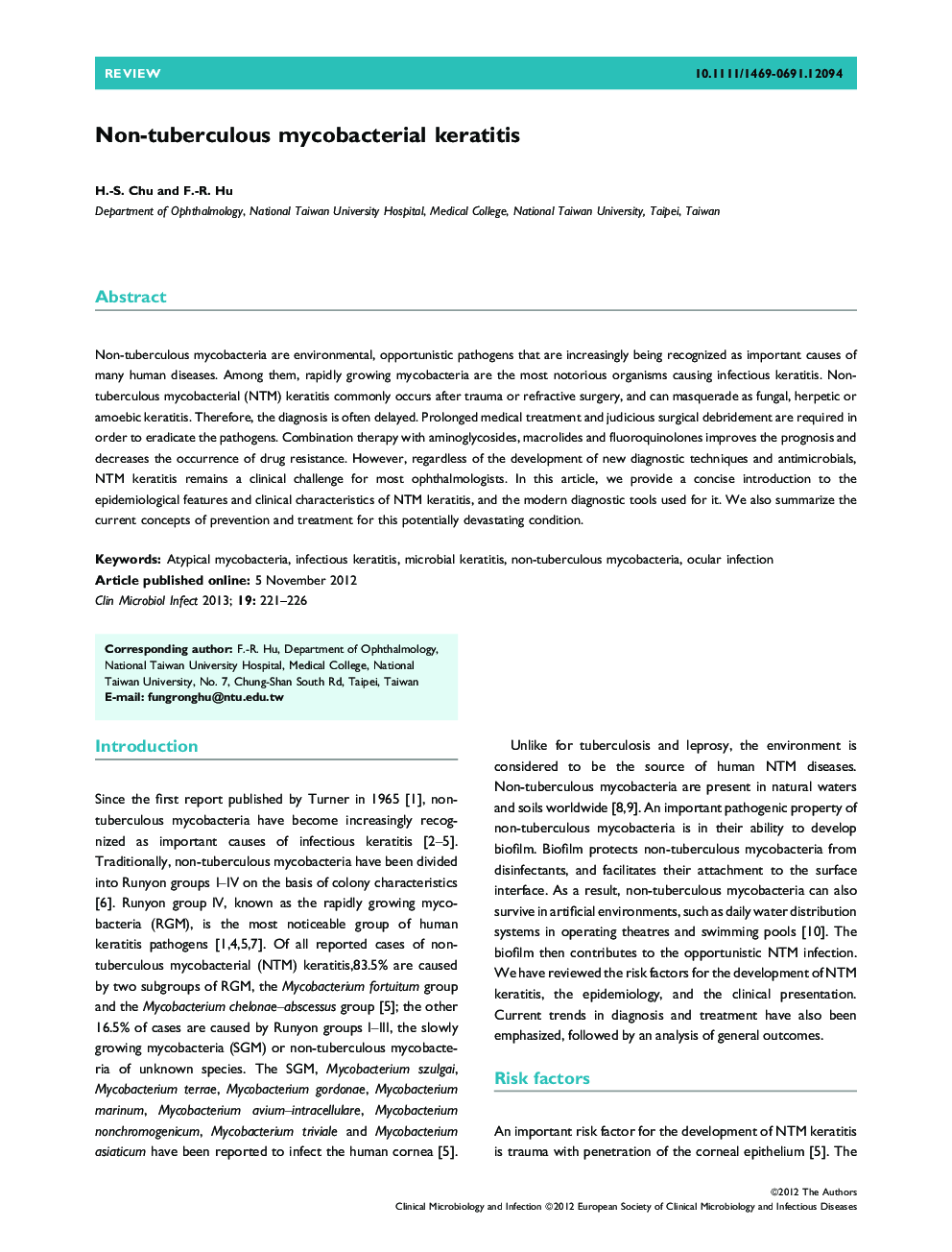| Article ID | Journal | Published Year | Pages | File Type |
|---|---|---|---|---|
| 6130877 | Clinical Microbiology and Infection | 2013 | 6 Pages |
Abstract
Non-tuberculous mycobacteria are environmental, opportunistic pathogens that are increasingly being recognized as important causes of many human diseases. Among them, rapidly growing mycobacteria are the most notorious organisms causing infectious keratitis. Nontuberculous mycobacterial (NTM) keratitis commonly occurs after trauma or refractive surgery, and can masquerade as fungal, herpetic or amoebic keratitis. Therefore, the diagnosis is often delayed. Prolonged medical treatment and judicious surgical debridement are required in order to eradicate the pathogens. Combination therapy with aminoglycosides, macrolides and fluoroquinolones improves the prognosis and decreases the occurrence of drug resistance. However, regardless of the development of new diagnostic techniques and antimicrobials, NTM keratitis remains a clinical challenge for most ophthalmologists. In this article, we provide a concise introduction to the epidemiological features and clinical characteristics of NTM keratitis, and the modern diagnostic tools used for it. We also summarize the current concepts of prevention and treatment for this potentially devastating condition.
Keywords
Related Topics
Life Sciences
Immunology and Microbiology
Microbiology
Authors
H.-S. Chu, F.-R. Hu,
